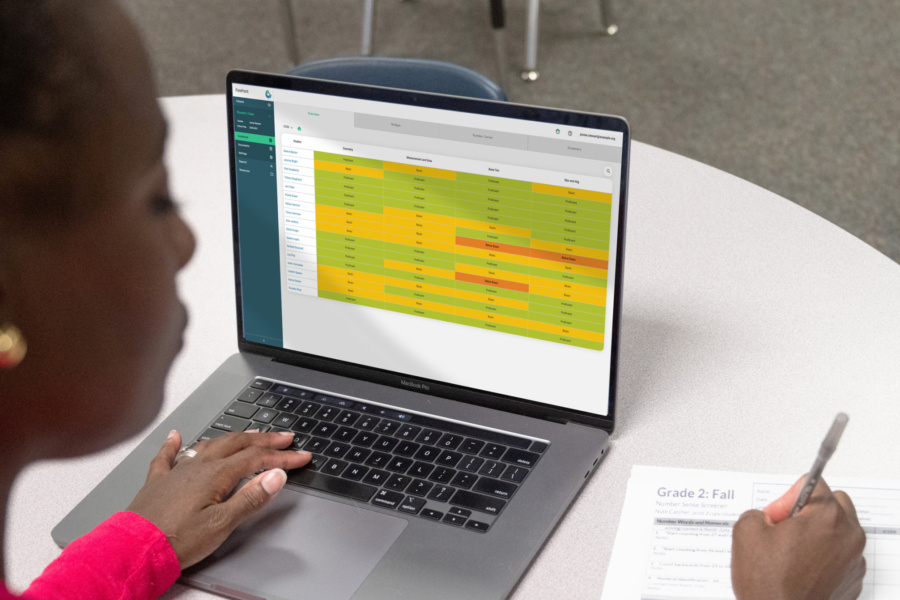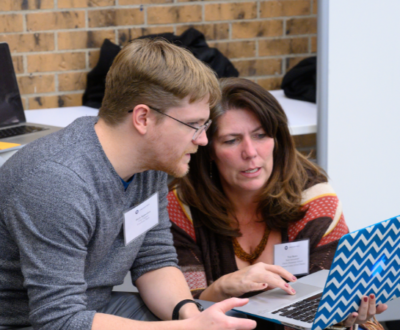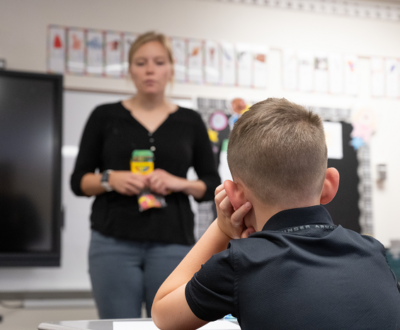Standards-based assessment is the practice of assessing student learning relative to specific learning outcomes. To illustrate what it looks like in practice, let us consider three examples:
Example 1:
Example 2:
Example 3:
All three examples could erroneously be considered examples of standards-based assessment, but they provide an important distinction: tests with clearly defined learning goals are only one half of the practice of standards-based assessment.
Effective standards-based assessment practices use assessments to measure growth toward defined learning goals and use the information obtained to help learners achieve those goals.
The second example with Teacher Y is the only example of true standards-based assessment. Effective standards-based assessment practices use assessments to measure growth toward defined learning goals and use the information obtained to help learners achieve those goals.
What is Standards-Based Assessment?
Prominent thought leaders such as Robert Marzano and Jay McTighe use the term standards-based assessment to suggest that schools should first have definitions of the learning goals. Once schools define their learning goals, they should work backwards to design the tools to understand student progress toward these end goals. These tools include the use of rubrics, scoring-guides, and assessments.
John Hattie describes this idea in his chapter on Teacher Clarity in Visible Learning for Mathematics, and sees it as the essential starting point for optimizing student learning. Rick DuFour (Learning by Doing, 2006) put it as critical question #2 for a PLC, “How will you know if they learned it?”
While we call it “standards-based,” learning goals don’t always have to be state standards. Sometimes the desired outcomes for instruction are not clearly articulated in the Common Core or state standards. Even when different frameworks are used for defining outcomes, we still call this standards-based assessment.
Put Standards-Based Assessment Into Practice
In implementation, standards-based assessment can look different from one system to the next. At the core, schools that implement standards-based assessments seek to keep the measure and information about student progress toward defined learning goals at the center of their school-improvement efforts. Below are the five essential steps to put this into practice:
Step 1: Define Proficiency
Whether you use the Common Core, state standards, or develop your own local standards or other framework to define learning outcomes, learning goals need to be concrete with clear indicators for when students demonstrate proficiency.
Step 2: Define Progress Toward Proficiency
Once proficiency has been defined, progress toward proficiency must also be defined. Districts will have to describe what it looks like as learners approach full proficiency/mastery. Additionally, it is ideal to also consider what it looks like when students exceed proficiency.
Step 3: Prepare Assessment Tools
The assessments teachers use with students are essential to this process. Begin a full inventory and examination of the assessments that are in use to make sure that they help define proficiency toward the targeted learning goal. Adoption committees can ensure that adopted curricula have provided tasks and the necessary documentation for teachers to use as standards-based assessments. Find or make guides that align assessments with standards. Review these together with teachers so that all stakeholders talk with one another about standards in meaningful ways. This is ongoing work that is constantly evolving.
Observational tools can also help teachers identify proficiency and progress toward proficiency. Experienced teachers know what to look for, but having tools supports everyone’s learning.
Step 4: Focus on Student Learning
Within the idea of standards-based assessment, is the premise that learners themselves should understand learning expectations. They should have multiple, varied opportunities to demonstrate their learning. This means that, whether on a formalized assessment or not, recognize a student every time that s/he demonstrates proficiency in class.
This may blur the line between “standards-based learning” and “standards-based assessment”. Within practices of standards-based assessment, not everything should be “scored” or “graded.” Learners need to practice and develop their skills completely free of risk. Teachers should gather this evidence even if not used for grade books as formative assessment to inform their instructional practices.
Step 5: Assessment for Learning vs Grading
Standards based assessments should be used for standards-based grading, but assessments go well beyond grading. Standards-based assessment includes the learner’s self-reflection on their own progress, a wide variety of formative assessment practices, the feedback provided to the learner, and a focus on continual growth. For this reason, many standards-based assessments will have no bearing on standards-based grades.
Conclusion
Assessments should align with well-defined learning outcomes, help us measure progress toward those outcomes, and guide learning and instruction. These ideas are not new, and yet, they can be challenging to put into action. Assessments are not just tools for measuring instructional outcomes. They are also tools to improve instructional outcomes. When your schools implement quality, standards-based assessment, it becomes a critical aspect of the school improvement process.
Citations & Additional Resources
DuFour, Richard, et al. Learning by Doing: A Handbook for Professional Learning Communities at Work. Solution Tree Press, 2020.
Hattie, John. Visible Learning for Mathematics, Grades K-12: What Works Best to Optimize Student Learning. Corwin, a SAGE Company, 2017.
Hess, Karin J., et al. Deeper Competency-Based Learning: Making Equitable, Student-Centered, Sustainable Shifts. Corwin, 2020.
About us and this blog
Our team and tools help schools implement standards-based grading, streamline assessment systems, and use meaningful data to drive decision-making.
Interested in Learning More?
Download our free Educator's Guide to Standards-Based Grading to access a roadmap to improve standards-based grading systems in your schools.
More from our blog
See all postsForefront is the only assessment data solution optimized for classroom assessment results, leveraging these results to fuel instruction, PLCs, and grading. Elevate meaningful assessment data district-wide to transform how you understand and communicate about student learning across your schools.
Copyright © 2025 Forefront Education, Inc. All Rights Reserved.








